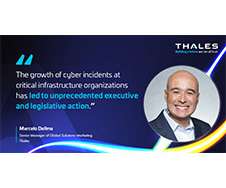The Ongoing Cyber Threat to Critical Infrastructure
Thales Cloud Protection & Licensing
JULY 21, 2022
The threat of attacks against Critical National Infrastructure (CNI) – energy, utilities, telecommunications, and transportation – is now front of mind for many. This includes using easily guessed passwords and falling victim to phishing and socially engineered techniques such as business email compromise.












Let's personalize your content